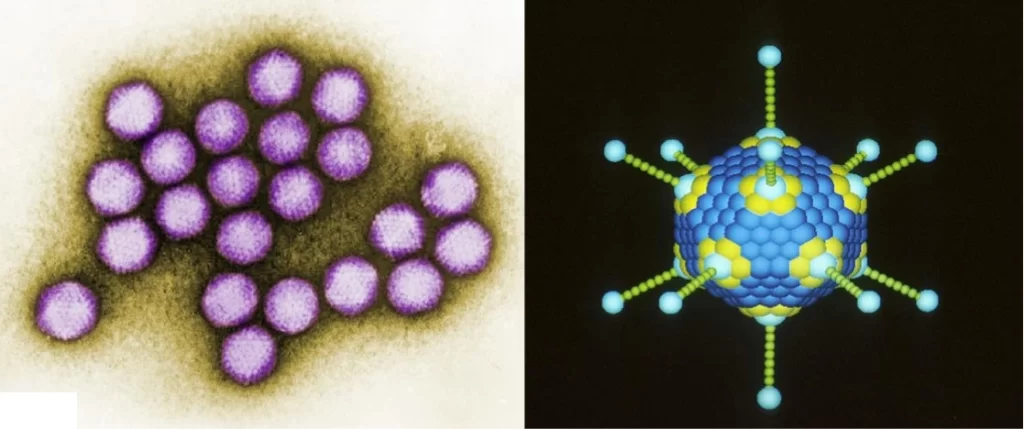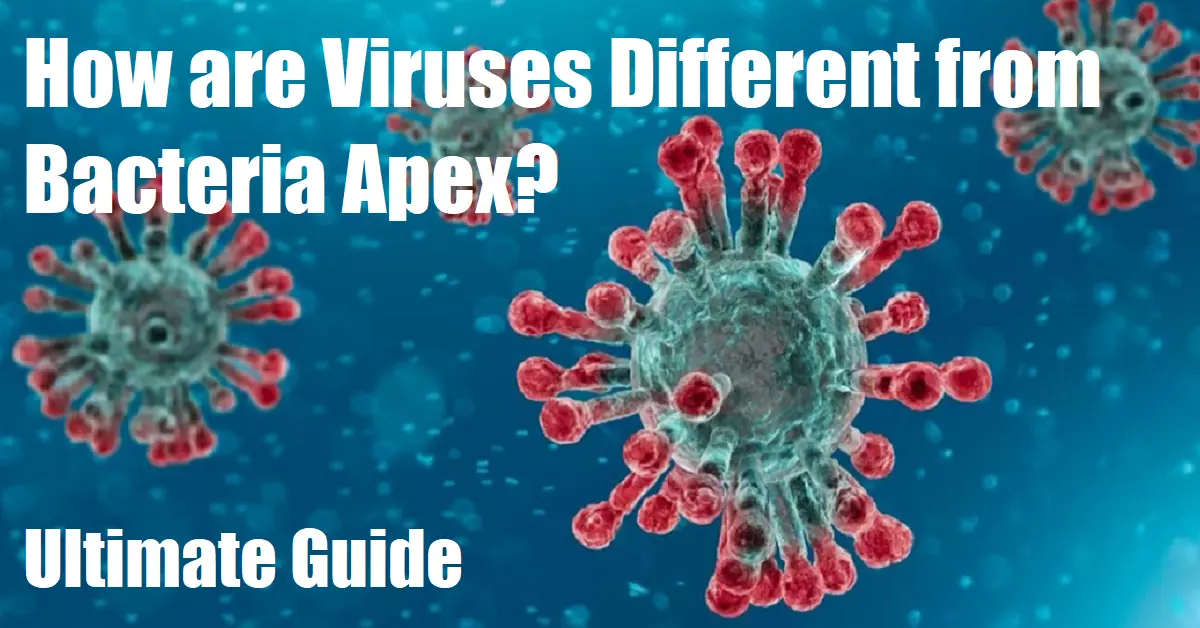Viruses and bacteria are microscopic organisms that play significant roles in the world of biology. While both viruses and bacteria can cause diseases, they have distinct characteristics and structures. In this article, we will share the complete details about How are Viruses Different from Bacteria Apex, and shedding light on their unique properties and how they interact with living organisms.

Also Read: How to Flush Phentermine Out of Your System : Ultimate Guide
What are Viruses?
Viruses are small infectious agents that are considered non-living. They are incapable of reproducing on their own and depending on host cells to multiply. Viruses consist of genetic material (DNA or RNA) enclosed within a protein coat known as a capsid. Some viruses may also have an additional envelope derived from the host cell.
Structure of Viruses
Viruses have a simple structure compared to bacteria. They consist of genetic material, either DNA or RNA, surrounded by a protein coat called a capsid. The capsid protects the genetic material from the environment and facilitates the virus’s attachment to host cells. Some viruses also possess an envelope, which is derived from the host cell’s membrane.
Reproduction of Viruses
Viruses cannot reproduce independently. To replicate, viruses must infect a host cell. After virus takes control of the host cell’s completely, it produce more viral components. These components are then assembled to create new viruses. The newly formed viruses eventually burst out of the host cell, leading to the destruction of the cell and the spread of the infection.
Viral Infections and Diseases
Viral infections can seriously cause different diseases in humans and animals i.e. common cold, influenza, measles, and also HIV/AIDS. Viruses have specific target cells, and they invade these cells to replicate and cause damage. It’s worth noting that body’s immune system plays a strong role in fighting with viral infections.
Also Read: How to calculate BMI in Rstudio
What are Bacteria?
Bacteria are mainly single-celled microorganisms found in various habitats on Earth. They are alive organisms capable of their independent reproduction. Bacteria can be classified into different shapes such as cocci (spherical), bacilli (rod-shaped), and spirilla (spiral-shaped). They can exist as solitary cells or form colonies.
Structure of Bacteria
Bacteria have a more complex cellular structure compared to viruses. Bacteria’s have a cell membrane that combines of cytoplasm and genetic material in DNA form. Bacteria also have a rigid cell wall made of peptidoglycan, a substance absent in animal cells. Some bacteria possess an additional outer membrane, known as the outer cell membrane.
Reproduction of Bacteria
Bacteria reproduce through a process called binary fission, where one cell divides into two identical cells. This asexual reproduction allows bacteria to rapidly multiply under favorable conditions. Some bacteria can also exchange genetic material through a process called conjugation, enhancing their genetic diversity.
Bacterial Infections and Diseases
Bacterial infections can cause vast range of minor and major diseases in humans and animals. i.e. strep throat, urinary tract infections, and also pneumonia. Bacteria can invade tissues and release toxins that damage cells, leading to inflammation and disease symptoms. In such infections, antibiotics are mostly used to treat and combat bacterial infections.
Differences in Structure
The structure of viruses and bacteria differs significantly. Viruses mainly consist of genetic material (DNA or RNA) shaped in a protein coat, while bacteria have a more complex cellular structure including cell membrane, cytoplasm, and some genetic material within the DNA. Bacteria also possess a cell wall, which is absent in viruses.
Mode of Reproduction
Viruses require host cells for reproduction and cannot reproduce independently. They invade host cells, hijack their machinery, and use it to replicate. On the other hand, bacteria reproduce independently through binary fission, where one cell divides into two identical cells. Some bacteria can also exchange genetic material through conjugation.
Response to Antibiotics
Bacteria and viruses differ in their response to antibiotics. Antibiotics are best and more effective in bacterial infections, but other hand they are not effective in viral infections. Bacteria can develop resistance to antibiotics through genetic mutations or acquiring resistance genes from other bacteria. Viruses do not have the same mechanisms of resistance as bacteria.
Size and Complexity
Viruses are much smaller and simpler than bacteria. The size of different types of viruses ranges between 20 – 300 nanometers, other hand bacterias range between 1 – 10 micrometers in length. Bacteria have a more complex cellular structure with organelles, while viruses lack organelles and cellular machinery.
Impact on Living Organisms
Both viruses and bacteria can have significant impacts on living organisms. While some bacteria play beneficial roles, such as aiding digestion or producing essential substances, others can cause diseases. Comparatively, viruses are only known for their disease-causing capabilities. Viral infections can have severe consequences on the health of organisms.
Importance in Scientific Research
Both viruses and bacteria are crucial in scientific research. Since both are used for studying and analysis in different biological processes, including genetics, evolution, and host-pathogen interactions. Scientists study viruses and bacteria also to make vaccines, understand disease mechanisms, and also develop new treatment strategies.
Conclusion
In conclusion, viruses and bacteria are distinct microscopic organisms with unique characteristics and behaviors. While viruses are non-living entities that require host cells for replication, bacteria are independent living organisms capable of reproducing on their own. Understanding the differences between viruses and bacteria is essential for medical professionals, researchers, and the general public to combat diseases effectively and develop appropriate treatment strategies.
FAQs
- Are viruses alive? Viruses are considered non-living because they lack essential characteristics of living organisms, such as the ability to reproduce independently.
- Can antibiotics treat viral infections? No, antibiotics are ineffective against viral infections. They are only useful in treating bacterial infections.
- How do bacteria become resistant to antibiotics? Bacteria can develop resistance to antibiotics through genetic mutations or acquiring resistance genes from other bacteria.
- What is the size difference between viruses and bacteria? Viruses are very much smaller than bacteria, ranging from 20 – 300 nanometers in size, while bacteria 1 – 10 micrometers in size.
- Why are viruses and bacteria important in scientific research? Viruses and bacteria serve as valuable model organisms for studying various biological processes, diseases, and developing new treatment strategies.
Also Read: 5 types of Important Insurance every person should have
